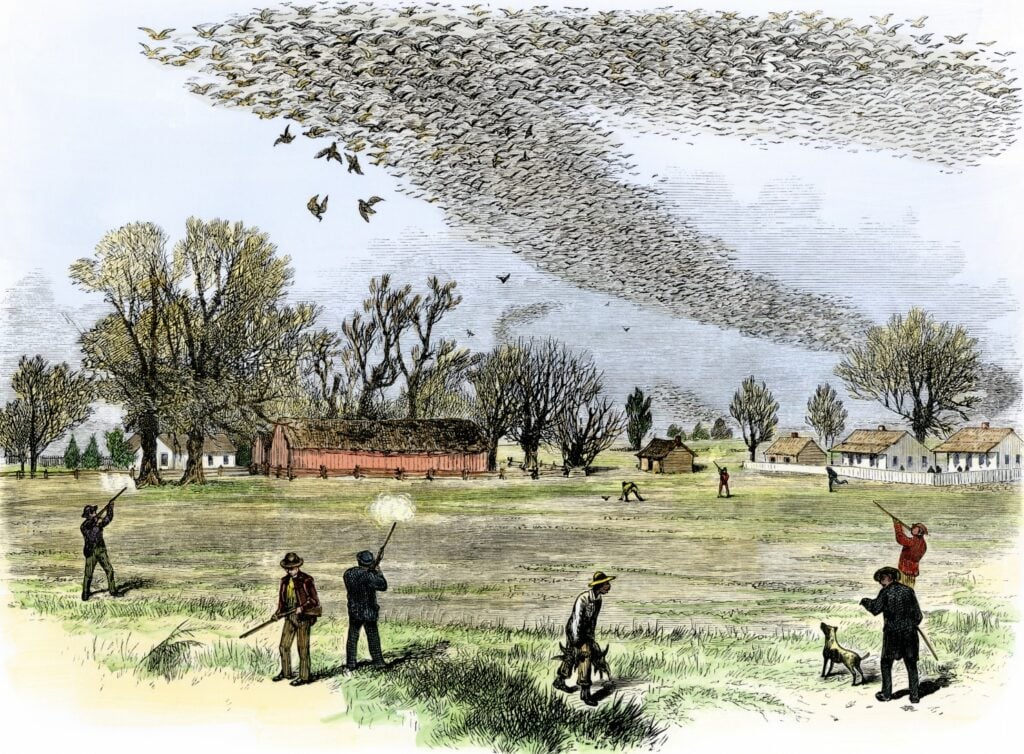The Passenger Pigeon, more commonly known as the wild pigeon, is an extinct species of pigeon that used to be endemic to North America. But did you ever wonder why they no longer exist?
The Passenger Pigeon used to be the most abundant bird on the planet. But due to commercial exploitation of pigeon meat and the massive loss of habitat, they are now extinct.
Martha, The Last Passenger Pigeon
Approximately a century ago, one of the most abundant birds on the planet got wiped out after the last of their species died at the Cincinnati Zoo. She was called Martha, and she passed at the age of 29.
People coming to the zoo to see the last passenger pigeon were disappointed by the bird, which barely budged off its perch. Some threw sand into its cage to try to force it to walk around.
Joel Greenberg, Author, A Feathered River Across the Sky
Martha’s death was a quiet end to such a noisy species. In the mid-1800s, billions of Passenger Pigeons would swarm across the eastern half of the United States. Their massive number caused a deafening sound as they flocked by. But despite their large population, they proved no match for humans, who eventually drove them into extinction in a matter of decades.
Other species were also spiraling toward extinction in the late 1800s, but the destruction of the passenger pigeon happened on full public display. It became the icon of extinction.
Mark Barrow, Historian, Virginia Tech and the Author, Nature’s Ghosts
(Source: National Geographic)
What Caused the Passenger Pigeon’s Extinction?
Humans mainly cause the extinction of the Passenger Pigeon. The exploitation of pigeon meat and the destruction of their habitat are the main reasons for their extinction. Still, the massive decline from billions to zero in just a span of five decades seems relatively rapid.
In 2014, a study was published on the issue. The researchers tried to understand how such a thing could have happened to an abundant species like the Passenger Pigeon. According to the study, despite their large population, these pigeons’ genetics were not as diverse as we thought. They were termed as an outbreak species, and their periodic population crashes created genetic bottlenecks that reduced their genetic diversity.
The only difference between them is really this population size, so we can start to dig into what the evolutionary consequences of being a super-big population might be. Our mass murder of them over the course of decades was just too fast for evolution to keep up. Our study shows that passenger pigeons were strikingly well adapted to living in large populations. In large populations, natural selection is highly efficient. This suggests that if the environment had changed slowly as it may have after the end of the last ice age they would be able to adapt to these changes as they did at the end of the last ice age.
Professor Beth Shapiro, Professor in the Department of Ecology and Evolutionary Biology at the University of California, Santa Cruz
Professor Shapiro and her colleagues saw that some parts of the Passenger Pigeon’s genome had a high genetic diversity, thus stating that they had lived as a large population for a long time. Source: Forbes)
